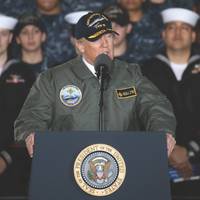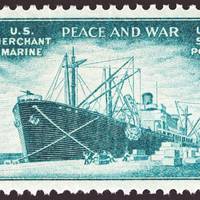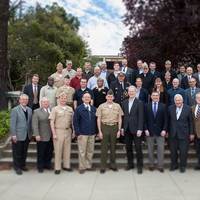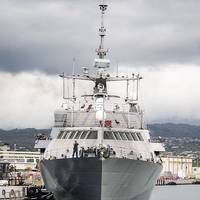Trump's Navy: A Look at the Future US Navy

It’s still too early to know for certain what the new administration will do about building up the U.S. Navy, as the numbers are a moving target. But with President Trump’s recent pledge to add $54 billion to defense spending, it’s a safe bet to make that the fleet will grow. So let’s start with the numbers. There are different ways to count the fleet size, including whether or not you count auxiliaries, but let’s use this number as the baseline: There are 274 ships in the U.S. Navy now.
Last Port of Call for the U.S. Merchant Marine?
Part II in a two-part series, continued from the January 2017 edition of Maritime Reporter & Engineering News. Read Part I here. If reliance on the foreign commercial market is risky because of uncertain reliability, then what of U.S. Government ownership of a fleet of vessels? That has also been on the menu since the early 20th century. President Woodrow Wilson proposed in September 1914 that the U.S. Government acquire commercial cargo vessels. Congress disagreed, which delayed enactment of the President’s proposal until the Shipping Act, 1916. A compromise was struck to permit U.S. Government ownership as a war time measure – but all vessels so acquired had to be sold to private owners within five years of the end of the war.
Last Port of Call for the US Merchant Marine?

The privately owned U.S.-flag foreign trading fleet, which is an essential component of U.S. sealift capability, stands on the edge of a precipice. The fleet – roughly stable in terms of cargo carrying capacity from 2000 to 2012 – has declined from 106 vessels in 2012 to 78 vessels at October 30, 2016 primarily because of a substantial decline in available U.S. Government-reserved cargo. The size of the fleet has reached a point where the viability of the U.S.-flag industry involved in foreign trade – including its trained mariners…
Sweden Shares Littoral Knowledge

Swedish Navy working with U.S. Naval experts are meeting in Monterey, California, this week to discuss something the Swedish armed forces know quite well: naval operations in the littoral or near coastal waters are very complex. Littoral warfare is very different from open ocean operations. The U.S. Navy is looking to the experience and expertise of the Swedish navy to operate, fight and prevail in this environment. The Naval Postgraduate School (NPS)in Monterey has established…
NPS Littoral Operations Center to Focus on Global Littorals

What does it take to win in the littoral? Start with knowledge. Naval warfare in littoral waters is very different from open ocean operations. The U.S. Navy is dominant in “blue water” scenarios, but less so in the littoral, naval experts say. “We are good at blue water operations, but we are not that skilled in fighting and operating in the littoral waters in places like the South China, the Baltic and Black Seas as well as the Persian Gulf,” said Prof. Wayne Hughes, a retired U.S.
Pirate Alley

Even with a multi-national flotilla of warships, armed security guards on merchant ships, and phalanxes of lawyers making policy and negotiating ransoms, seemingly unsophisticated Somalis and their small, simple skiffs still attack ships on the high seas and hold seafarers, ships and cargos for ever-growing sums of money. Rear Adm. Terry McKnight, a retired naval officer, had a front row seat in the effort to deter and defend against piracy on the high seas. McKnight, who with Michael Hirsh wrote Pirate Alley – Commanding Task Force 151 Off Somalia…
USNI Appoints VAdm Daly Chief Executive Officer
On July 27, 2011, the U.S. Naval Institute (USNI) begins an important new chapter with the appointment of Vice Admiral Peter H. Daly, U.S. Navy (Ret.) as the professional society’s Chief Executive Officer. Daly served from August 2008 until June 2011 as Deputy Commander and Chief of Staff, U.S. Fleet Forces Command. He brings more than 30 years experience as a commissioned naval officer, to include command of the destroyer USS Russell (DDG 59); Commander, Destroyer Squadron 31; and Commander, Carrier Strike Group 11. He has also served as Deputy for Resources and Acquisition (J-8), Office, Chairman of the Joint Chiefs of Staff; and as Senior Military Assistant to the Secretary of the Navy.






